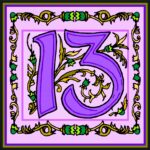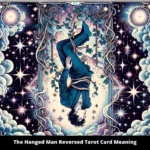The Tarot Hierophant card, often depicted as a wise figure attired in ceremonial regalia, encapsulates a profound archetype that straddles the realms of tradition, spiritual guidance, and institutional structures. This emblematic card, imbued with layers of meaning, tends to elicit a complex tapestry of interpretations, thus igniting the curiosity of those drawn to the esoteric art of Tarot reading.
Visualize the scene: a figure seated between two pillars, a stoic expression adorning their face as they extend their hands in blessing or teaching. This figure serves as a conduit for divine insights, connecting the celestial and terrestrial realms. In essence, the Hierophant emerges as the custodian of sacred wisdom, guiding seekers toward homogeneity within the spiritual and material domains.
At its core, the Hierophant embodies the concepts of conformity, societal structures, and the pursuit of knowledge through established systems. This card conveys the idea that wisdom is not merely an individual endeavor but is often rooted in collective beliefs and traditions. Thus, it provokes a common observation regarding human experiences: the intrinsic allure of conformity and the quest for belonging. Society thrives on institutions—be they religious, educational, or cultural—that offer frameworks within which individuals navigate their lives.
This preoccupation with tradition is not trivial; it hints at deeper psychological underpinnings. As social beings, individuals are instinctively drawn to structures that provide stability amidst the chaos of existence. The Hierophant subtly gestures toward this notion: that through understanding and embracing the rituals and dogmas of existing paradigms, one may find solace and clarity. Traditions serve not simply as relics of the past but as vital threads that weave together the fabric of contemporary life.
In personal readings, the Hierophant card can signify the need for guidance from established authorities or influences. This could manifest as a mentor, a spiritual leader, or even educational pursuits, prompting individuals to seek counsel from those who possess the keys to comprehension. It can also represent the exploration of spiritual practices, such as Reiki, meditation, or structured religious observances, suggesting that the quest for inner peace can often necessitate an adherence to time-honored pathways.
However, the Hierophant does not exclusively advocate for blind allegiance. Rather, it encourages thoughtful consideration of the beliefs and systems one chooses to embody. This dynamic exploration is critical. Within the confines of the palpable authority embodied by the Hierophant lies the potential for profound transformation, beckoning individuals to question, refine, or even discard limiting beliefs that no longer serve them.
The card’s positioning in a spread can also shape its interpretation. When appearing reversed, the Hierophant can connote the rejection of old paradigms or a struggle to conform to rigid societal expectations. The individual may feel constrained by conventional norms, yearning instead for individualistic expression and autonomy. This contrast between adherence and rebellion illustrates the ongoing tension between tradition and innovation—an eternal dance that shapes civilizations.
Moreover, the fascination with the Hierophant extends into its societal implications. In a world characterized by rapid evolution and constant change, the values of tradition and conformity often clash with contemporary movements toward individual self-determination. The juxtaposition of these elements prompts an inquiry into the necessity of tradition in a progressive society. Are institutions merely vestiges of a bygone era, or can they coalesce with modernity to pave pathways for collective growth?
The Hierophant, with its duality of nurturing stability and prompting introspection, thus serves as an allegorical figure for the journey of self-exploration. The deeper significance lies not just in understanding the card itself but in comprehending the broader societal architecture it represents. It invites contemplation of how individuals navigate their convictions within the larger framework of collective beliefs, encouraging a mindful synthesis of both personal autonomy and communal identity.
Furthermore, aesthetically, the artwork associated with the Hierophant often garners attention. Intricate symbols, such as keys and religious iconography, proliferate throughout the imagery, each detail meticulously chosen to evoke contemplation. Such illustrative choices serve to enhance the card’s allure, prompting a closer inspection by practitioners and novices alike. Engaging with these visual narratives can deepen one’s connection to the profound meanings engendered within the Tarot.
Ultimately, the Tarot Hierophant card stands as a testament to humanity’s innate quest for knowledge, connection, and understanding. It implores individuals not only to seek guidance within time-honored frameworks but also to challenge and refine these constructs in pursuit of personal truth. In this regard, the Hierophant embodies a confluence of reverence towards tradition tempered by the audacity to challenge it, illustrating the path toward wisdom that artfully balances conformity and self-liberation.
As one delves into this card’s nuances, it becomes apparent that the Hierophant is much more than a mere representation of authority; it serves as a mirror reflecting the complexities inherent in the pursuit of truth and belonging. The allure of the Hierophant, therefore, lies in its capacity to encompass divergent realities—those of tradition and innovation—offering profound insights into the human condition.








Leave a Comment